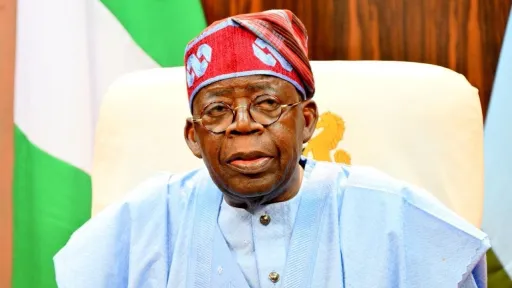By Abdalla Uba Adamu
The possibility of an evolutionary link between Hausa language cinema and Bollywood, the home of India's boisterous Hindi language cinema that is considered second only to Hollywood in its global influence, might appear implausible at first thought.
The truth is that Kannywood, the moniker by which fledgling Hausa language cinema chose to identify itself, had been unashamedly coined after Bollywood by a writer, Sunusi Shehu Burhan, in the August 1999 edition of the Hausa language magazine Tauraruwa – itself fashioned after Bollywood's Stardust.
Obscure as the Hausa language film industry was, this labelling was, unarguably, the first for a film industry in Africa.
Nollywood, or Nigerian cinema, was a coinage attributed to Norimitsu Onishi of The New York Times in 2002, and came to define filmmaking in Nigeria, despite the varieties of cultural representations in the country.
This perhaps explains the "non-Nollywood’ posture of indigenous language cinema in the country.
For while Nollywood is basically English language cinema (as Genevieve Nnaji, the director of Lionheart, discovered to her chagrin when the film was not accepted for an Oscar nomination in 2019), it is only so because of the use of English as the official language.
Yet, despite this, Nollywood cannot be seen as Nigeria's national cinema, particularly as the Nigerians themselves are wont to point out that they are made up of different "nationalities".
Kannywoodthemes
Attempts to subsume indigenous language cinema under the general rubric of Nollywood did not work – cinema in other Nigerian languages does not encapsulate the concept of a post-colonial narrative – which is one of the main theoretical thrusts of Nollywood cinema, with a strong nod towards the auteur theory (e.g. Kunle Afolayan, Tunde Kelani, Izu Ojukwu).
Out of the Woods So, what would be a film theory in Kannywood? Clearly none of the predominant film theories apply to Western films.
True, a lot of dissertations had been written on female representation in Hausa films (thus, alluding to the feminist theory), but none had been submitted, that I know of, with a focus on psychoanalytical, Marxist, Queer or Auteur theories.
Most of the analysis in published book chapters, journal articles, conference presentations and dissertations were mainly based on structuralist critical theory by analysing disjuncture in culture and religion of the Hausa in the films against what I call "social databases".
But then, who says we must have theories? Echoing Michael Chekhov, isn't technique a theory?
The narrative elements of Kannywood revolve basically around three structures: romantic storyline, domestic conflicts and choreographed singing and dancing, although over the years, the singing and dancing has reduced drastically.
It was, as claimed by many filmmakers, unapologetically inspired by Bollywood. So much so that dozens of Hausa films were direct remakes of corresponding Bollywood films.
The theory of Kannywood, then, falls within the subset of Bollywood's dramatic spectacularism.
Kannywood productions differed from Bollywood only in the language of delivery up to 2007, after which new thoughts came to be applied to Hausa language cinema.
First, it became truly ethnographic. It was no longer a clone of any "Wood", but a reflection of Hausa city life and urban cultures. The massive success of Hausa TV shows now flooding YouTube testifies to this.
There is increasing less emphasis on feature films, and more focus on series dramas that bring out narrative creativity.
Beyond borders
Second, it has become transethnic – creating storylines that reference various ethnicities as critical elements to cooperative living.
Daɗin Kowa, a fabled urban settlement somewhere in the north of Nigeria, embodied this new form of melting pot communality.
Third, its viewership is transnational – sweeping through both Anglophone and Francophone countries of Africa wherever Hausa are located in sizeable amounts, whether ‘native’ to the country, or diasporic.
Fourth, the term Kannywood has done its bit for over 24 years. It is time to lay it to rest. Even the practitioners believe so.
This was evidenced by the emergence of Kaddywood in Kaduna to rival Kannywood — not as industries of film production but as associations negotiating relevance, public visibility and hopefully lucrative engagement with government establishments and politicians. No one was talking about film theories of visible representation.
Last, and most significantly, it is no longer connected to the city of Kano – such as Hollywood and Bollywood (derived from Bombay) – or even Nigeria.
Ghana, Cameroon and Niger Republic are now full-fledged sites for production, distribution and consumption of Hausa films without the necessity of bringing them to Kano for either censorship or marketing.
They are now Hausa films, not Kannywood films. Since there is no "Kannywood production culture", it becomes superfluous to continue labelling films produced in Hausa as Kannywood films.
Indeed, even the film practitioners themselves and their audiences simply refer to them as "Finafinan Hausa" (Hausa films). Hausa cinema, therefore, is a definitive label for Hausa films, within the context of newer production values.
The 'cinema' gives the term a theoretical coefficient. I am sure there are many other more points one could add to these. Thus, I would like to suggest "Hausa cinema" as an evolutionary alternative to "Kannywood"’.
This would be a cinema that reflects the cultural anthropology of the Hausa people, wherever they are.
(The author, Prof. Abdalla Uba Adamu, teaches at Bayero University, Kano, Nigeria)
























